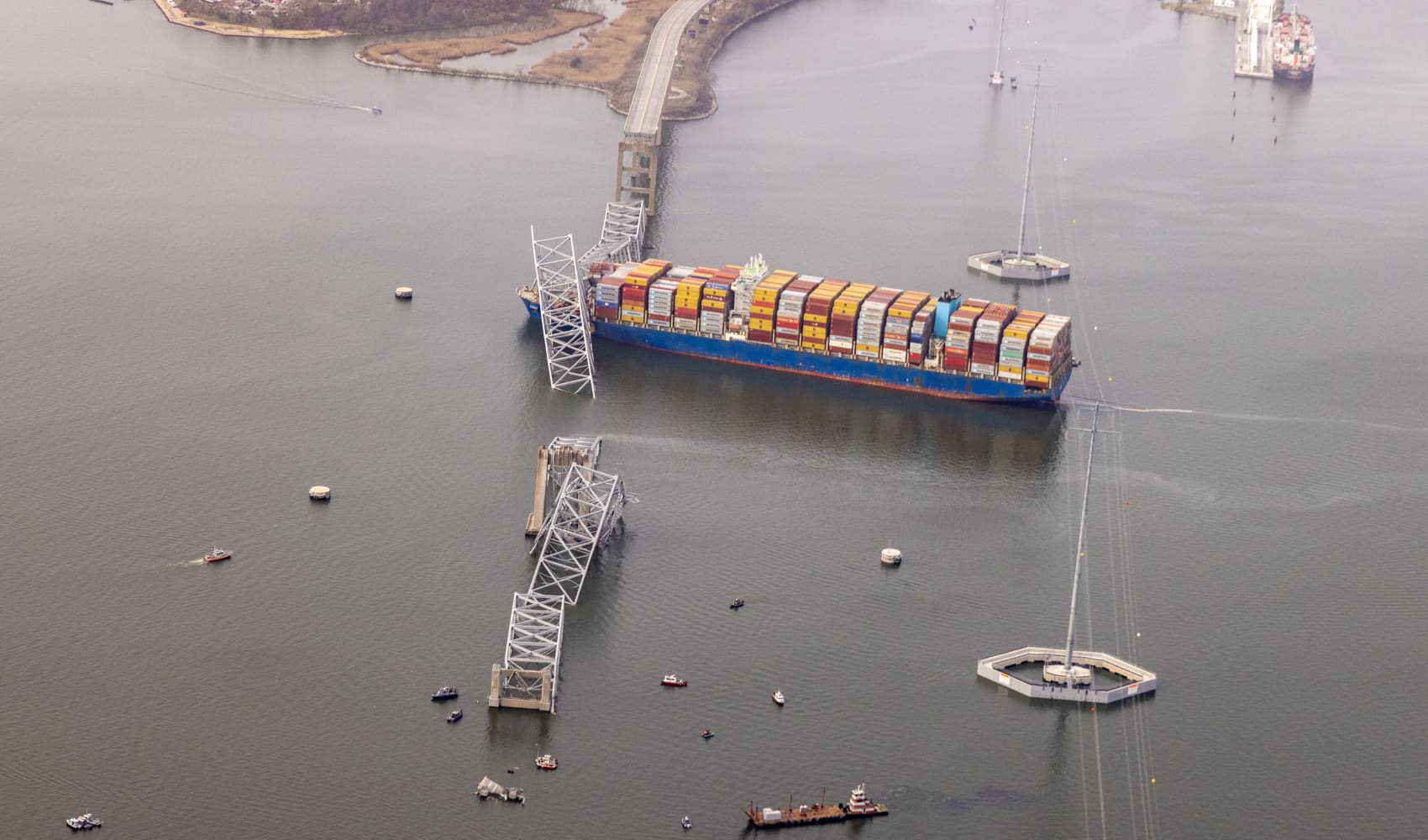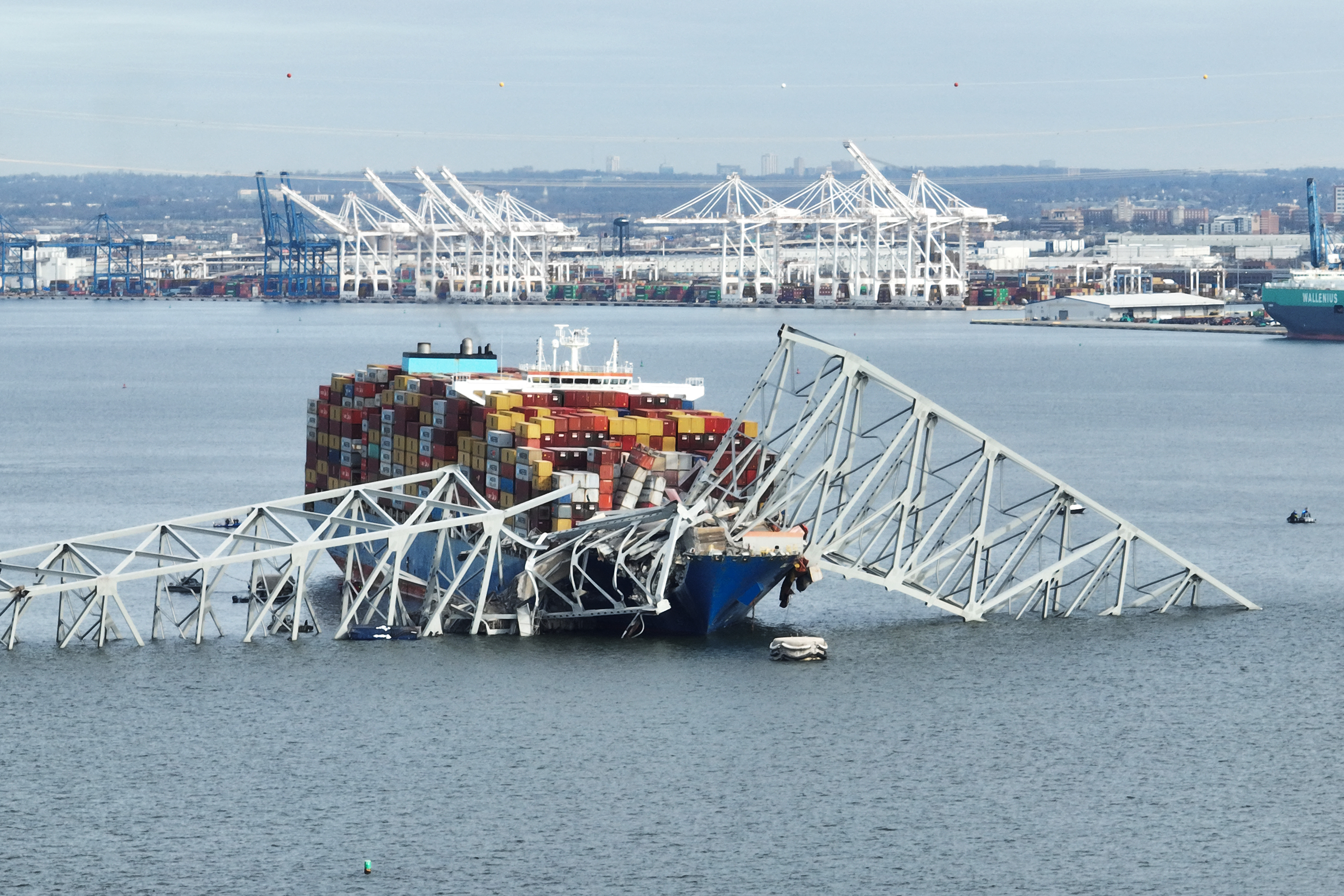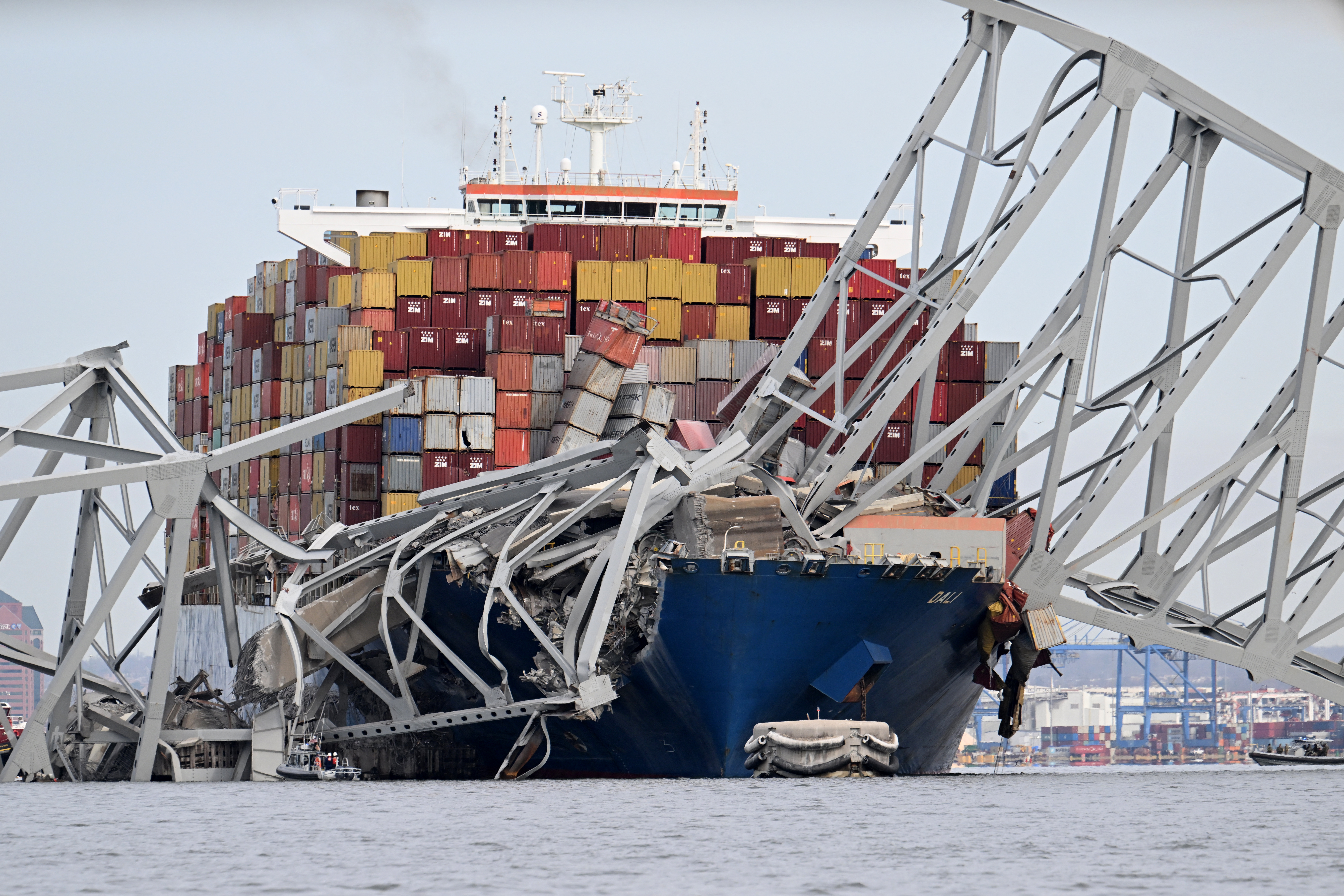It's hard for any expert to speculate exactly what happened on the cargo ship that crashed into the Francis Scott Key Bridge early on Tuesday morning, but a Philadelphia-based marine engineer who spoke with NBC10 gave some insight into what typically happens in a situation like this.
Marine Engineer Steve Perry estimates that the ship was likely going about six to eight knots or 10 to 15 miles per hour.
Perry explained that it was medium-sized for a modern container ship which will usually have around 20 crew members on board.
In the span of four minutes, the ship had gone dark twice before it collided with the bridge.
Get Philly local news, weather forecasts, sports and entertainment stories to your inbox. Sign up for NBC Philadelphia newsletters.
"The first thing that should have been done under any circumstance, in my opinion, would have been to drop the anchor, absolutely," Perry told NBC10.
But, Perry also said that there was likely not enough time because dropping the anchor is a three-person job that requires multiple steps and running across the ship.
"It's a very dangerous situation, so it's usually a three-man person evolution," he said.
Perry said the power came back on both times due to the backup generators which could be why crews weren't instructed to drop the anchor right away.
"Since the lights came back on again, it doesn't sound like it was an electrical fault on the switchboard, so chances are they lost lube oil pressure or something that caused it," according to Perry.
Even with the loss of power, the ship still went forward due to momentum and the ultimate issue came down to steering.
"They were already really too close. The unfortunate thing is they veered to the right," Perry said. "If they would have been in the channel with the rudder straight ahead, they would have continued drifting straight ahead and gone under the bridge."
Until the National Transportation Safety Board finishes its investigation, we won't know for certain if a power outage or electrical fault was the issue.
Sign up for our Breaking newsletter to get the most urgent news stories in your inbox.




